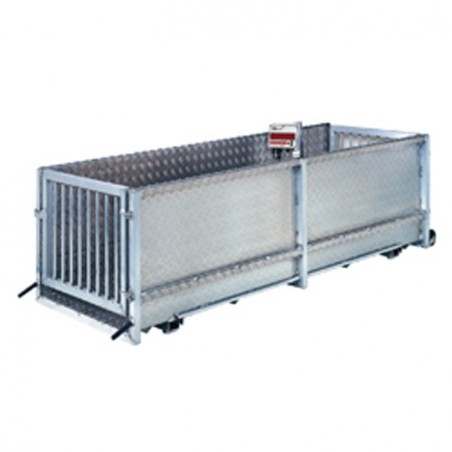In this longitudinal study, we sampled 5 farrow-to-wean farms during a year and collected 4,190 individual nasal swabs from three distinct pig subpopulations. 207 (4.9%) samples tested PCR positive for IAV, and 124 IAVs were isolated. We sequenced the complete genome of 123 IAV isolates, and found 31 H1N1, 26 H1N2, 63 H3N2 and 3 mixed IAVs. Based on the IAV hemagglutinin seven different influenza A viral groups (VGs) were identified. Most of the remaining IAV gene segments allowed us to differentiate the same VGs although an additional viral group was identified for gene segment 3 (PA). Moreover, the co-detection of more than one IAV VG was documented at different levels (farm, subpopulation, and individual pigs) highlighting the environment for potential IAV reassortment. Additionally, three out of 5 farms contained IAV isolates (n=5) with gene segments from more than one VG, and 79% of all IAVs sequenced contained a signature mutation (S31N) in the matrix gene that has been associated with resistance to the antiviral amantadine. Within farms, some IAVs were only detected once while others were detected for 283 days.
Our results illustrate the maintenance and subsidence of different IAVs within swine farrow-to-wean farms over time, demonstrating that pig subpopulation dynamics is important to better understand the diversity and epidemiology of swine IAVs.

IMPORTANCE: At the global scale swine are one of the main reservoir species for influenza A viruses (IAVs), and play a key role on the transmission of IAVs between species. Additionally, the 2009 IAV pandemics highlighted the role of pigs in the emergence of IAVs with pandemic potential. However, limited information is available regarding the diversity and distribution of swine IAVs in farrow-to-wean farms where novel IAVs can emerge. In this study we studied 5 swine farrow-to-wean farms during a year and characterized the genetic diversity of IAVs among three different pig subpopulations commonly housed in this type of farms. Using next generation sequencing technologies, we demonstrated the complex distribution and diversity of IAVs among the pig subpopulations studied. Our results demonstrated the dynamic evolution of IAVs within farrow-to-wean farms, which is crucial to improve health interventions to reduce the risk of transmission between pigs and from pigs to people.
Diaz A, Marthaler D, Culhane M, Sreevatsan S, Alkhamis M, Torremorell M; Complete Genome Sequencing of Influenza A Viruses within Swine Farrow-to-Wean Farms Reveals the Emergence, Persistence, and Subsidence of Diverse Viral Genotypes; J Virol. 2017 Jun 28. pii: JVI.00745-17. doi: 10.1128/JVI.00745-17.





